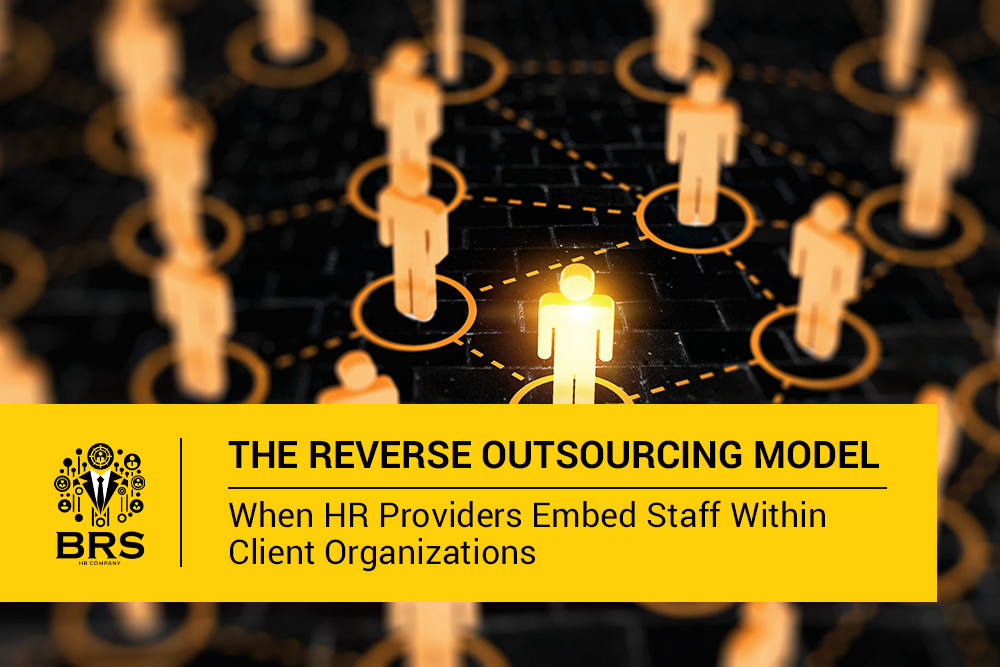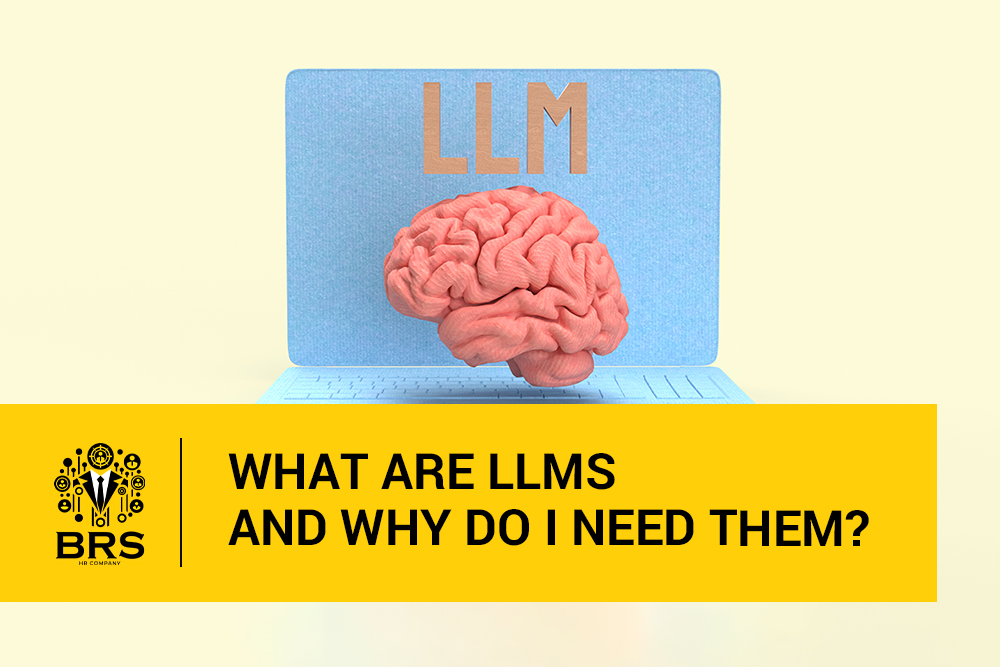Traditional HR outsourcing typically involves transferring functions and processes outside the organization to a third-party provider who manages them remotely. However, an innovative approach is gaining traction among forward-thinking companies: the reverse embedding model. In this arrangement, HR outsourcing providers physically place their employees within client organizations for extended periods, creating a hybrid solution that blends the cost efficiencies and specialized expertise of outsourcing with the cultural integration and contextual awareness of in-house teams. This reverse embedding trend represents one of the most significant evolutions in modern HR outsourcing strategy.
Understanding the Reverse Embedding Approach
The reverse embedding model operates on a fundamentally different principle than traditional HR outsourcing. Rather than extracting processes from the client organization, the provider integrates specialized personnel directly into the client’s environment. These embedded professionals remain employees of the outsourcing provider but function as integral members of the client’s HR team, often with dedicated workspaces, company email addresses, and direct reporting relationships with internal leadership.
This approach creates a unique hybrid arrangement where the embedded staff simultaneously belong to two organizational ecosystems—maintaining access to the outsourcing provider’s resources, knowledge base, and professional development while developing deep contextual understanding of the client’s culture, operations, and strategic priorities.
According to industry research, approximately 23% of large enterprises and 17% of mid-sized organizations now utilize some form of reverse embedding in their HR outsourcing relationships, with adoption rates increasing approximately 35% annually since 2021.
Key Differentiators from Traditional Outsourcing
The reverse embedding approach differs from traditional HR outsourcing in several fundamental ways that significantly impact outcomes:
Cultural Integration vs. External Processing
Traditional outsourcing creates clear separation between the client organization and the provider’s operations, with processes occurring outside the client’s cultural and operational context. This separation often leads to disconnection between HR functions and organizational culture, creating potential misalignments.
In contrast, reverse embedding places the outsourced professionals directly within the client’s cultural ecosystem, allowing them to absorb organizational values, communication styles, and unwritten norms that inform effective HR decision-making. This immersion enables more contextually appropriate HR solutions that align with organizational culture despite the third-party employment relationship.
Relationship Depth and Continuity
Traditional outsourcing typically involves rotating provider personnel who may support multiple clients simultaneously, creating challenges in relationship development and contextual understanding. Organizations frequently report that traditional outsourcing relationships require constant re-education of provider staff about organizational nuances and priorities.
Reverse embedding establishes continuity through dedicated personnel who develop deep institutional knowledge and relationships over time while maintaining connection to the provider’s expertise and resources. These embedded professionals become familiar faces within the organization—attending company events, participating in social activities, and developing authentic colleague relationships that strengthen their effectiveness.
When Reverse Embedding Creates Maximum Value
While not appropriate for every outsourcing scenario, reverse embedding delivers exceptional value in specific organizational contexts:
Complex Cultural Environments
Organizations with distinctive or complex cultures—including those with strong heritage values, unique operating philosophies, or specialized industry contexts—often struggle with traditional outsourcing precisely because critical cultural nuances get lost in the external processing model.
For these organizations, reverse embedding provides an ideal solution that preserves cultural alignment while delivering outsourcing benefits. The embedded HR professionals develop cultural fluency that informs their work, while the outsourcing provider’s resources and expertise enhance their capabilities beyond what would be possible in a purely internal role.
High-Touch HR Functions
Certain HR functions require exceptional interpersonal engagement and contextual sensitivity to be effective. These high-touch functions—including leadership development, employee relations, organizational development, and cultural transformation initiatives—often suffer in traditional outsourcing arrangements due to relationship discontinuity.
The reverse embedding model excels in these high-touch domains, where the embedded professional’s ongoing presence creates the relationship foundation necessary for effective intervention while the outsourcing provider’s specialized methodologies and tools enhance implementation quality.
Case Studies: Reverse Embedding Success Stories
Healthcare System Talent Development Transformation
A multi-site healthcare system struggled to implement effective leadership development programs through traditional HR outsourcing arrangements. Despite access to sophisticated development methodologies from their outsourcing partner, adoption rates remained low and impact metrics disappointed due to the external provider’s limited understanding of the unique clinical context and cultural nuances of healthcare environments.
The organization transitioned to a reverse embedding arrangement where the HR outsourcing provider placed three leadership development specialists physically within the organization three days weekly. These embedded professionals:
- Maintained offices in the clinical environments they supported
- Attended departmental meetings and leadership forums
- Shadowed clinical leaders to understand operational realities
- Participated in organizational events and celebrations
- Developed relationships with key stakeholders across the system
While maintaining employment with the outsourcing provider, these embedded specialists gained deep understanding of the healthcare system’s unique challenges and culture. This contextual knowledge allowed them to adapt the provider’s development methodologies to the specific clinical environment, resulting in:
- 87% increase in leadership program participation
- 42% improvement in leadership competency development metrics
- Significant enhancement in program relevance ratings from clinical leaders
- Measurable improvements in leadership retention compared to pre-implementation baselines
This success stemmed directly from the hybrid nature of the arrangement—combining the provider’s specialized expertise with contextual understanding that only embedded presence could develop.
Manufacturing Environment Employee Relations Enhancement
A manufacturing company with operations across multiple sites experienced persistent employee relations challenges despite contracting with a reputable HR outsourcing provider. The traditional outsourcing arrangement proved ineffective because the remote provider personnel lacked understanding of the specific shop floor dynamics, shift structures, and communication patterns that characterized the manufacturing environment.
The company transitioned to a reverse embedding model where the HR outsourcing provider placed dedicated employee relations specialists at each major manufacturing location. These embedded professionals:
- Maintained regular presence on the production floor during all shifts
- Developed direct relationships with front-line supervisors and team leads
- Participated in daily production meetings and shift handovers
- Became familiar with specific workflow challenges and physical environments
- Established informal communication channels with influential employees
While these specialists remained employees of the outsourcing provider—with access to legal resources, case management systems, and specialized training—their physical integration into the manufacturing environment created contextual understanding that transformed effectiveness. The arrangement resulted in:
- 64% reduction in formal grievances filed
- 47% faster resolution of employee relations issues
- Measurable improvement in employee satisfaction with HR responsiveness
- Enhanced supervisor confidence in addressing potential issues proactively
These improvements directly reflected the value of combining specialized expertise with contextual integration through the reverse embedding approach.
Operational Models for Reverse Embedding
HR outsourcing providers implement reverse embedding through several distinct operational models, each with specific advantages:
Dedicated Embedding Arrangements
In dedicated embedding models, the HR outsourcing provider assigns specific professionals exclusively to a single client organization with substantial on-site presence—typically 3-5 days weekly. These professionals function as integrated members of the client’s HR team while maintaining employment with the provider.
This model creates maximum cultural integration and relationship development while preserving access to the provider’s specialized resources and knowledge base. It proves particularly effective for:
- Organizations undergoing significant transformation requiring consistent support
- Environments with highly specialized cultural contexts that require deep understanding
- Functions requiring extensive stakeholder relationship development for effectiveness
While representing the highest cost arrangement among embedding models, dedicated embedding typically delivers the most substantial integration benefits.
Rotational Embedding Programs
In rotational embedding models, the HR outsourcing provider establishes a regular cadence of on-site presence—perhaps 1-2 days weekly or several consecutive days monthly—while maintaining some functions remotely. This creates a pulsed integration pattern that balances relationship development with cost efficiency.
This approach proves particularly valuable for:
- Cyclical HR functions with predictable high-touch periods (like performance management cycles)
- Organizations seeking partial integration benefits at lower cost points
- Functions requiring periodic deep engagement interspersed with ongoing support
Rotational models require careful scheduling and clear communication protocols to maximize effectiveness during both embedded and remote periods.
Measuring the Value of Reverse Embedding
Organizations implementing reverse embedding arrangements measure success through several key metrics:
Adoption and Utilization Metrics
One of the most significant advantages of reverse embedding appears in adoption metrics for HR programs and initiatives. Organizations report an average 58% improvement in utilization rates for HR services and programs implemented through embedded outsourcing arrangements compared to traditional outsourcing models.
This adoption advantage stems directly from the relationship foundation and contextual understanding that embedded presence creates. Employees more readily engage with HR initiatives when they have established relationships with the professionals implementing them, even when those professionals represent an outsourcing provider.
Integration Effectiveness Indicators
Organizations measure integration effectiveness through metrics including:
- Stakeholder perception of provider personnel as “part of the team” versus “external vendors”
- Inclusion of embedded professionals in organizational communication flows
- Frequency of proactive outreach from internal stakeholders to embedded personnel
- Accuracy of embedded professionals in predicting organizational responses to initiatives
- Participation of embedded professionals in organizational social activities
These indicators help organizations assess whether the embedding arrangement has achieved genuine integration versus merely relocating external professionals on-site without true cultural incorporation.
Challenges and Limitations of Reverse Embedding
While offering substantial benefits, reverse embedding arrangements also present distinct challenges that organizations must navigate:
Employment Boundary Management
Reverse embedding creates complex employment boundaries, with embedded professionals simultaneously functioning as members of two organizational systems. This dual identity requires careful management of:
- Performance evaluation responsibilities between client and provider
- Appropriate inclusion in client confidential discussions and information flows
- Handling of conflicting priorities between client needs and provider requirements
- Integration of embedded personnel into client organizational structures
- Clear delineation of decision authority across organizational boundaries
Successful arrangements establish explicit protocols addressing these boundaries while creating sufficient flexibility for effective integration.
Cost Premiums and Resource Allocation
Reverse embedding typically commands a cost premium compared to traditional outsourcing models due to:
- Travel and physical presence requirements
- Reduced economies of scale from dedicated personnel assignments
- Complexity of managing hybrid organizational relationships
- Enhanced communication and coordination requirements
- Specialized recruiting for professionals capable of effective embedding
Organizations must carefully evaluate whether the integration benefits justify these premium costs, particularly for functions where cultural context plays a less critical role in effectiveness.
The Future of Reverse Embedding in HR Outsourcing
Several emerging trends are reshaping how reverse embedding functions in HR outsourcing relationships:
Hybrid Physical-Virtual Embedding Models
The pandemic-accelerated shift toward hybrid work models has created new possibilities for embedding arrangements that blend physical and virtual presence. Advanced providers are developing sophisticated approaches that:
- Utilize targeted in-person embedding for relationship development and cultural immersion
- Leverage virtual presence technologies for ongoing engagement
- Create digital integration through collaboration platforms and communication tools
- Establish clear protocols for determining which activities require physical presence
- Develop metrics for virtual embedding effectiveness
These hybrid models potentially offer the benefits of embedding with enhanced flexibility and reduced travel requirements, creating more sustainable long-term arrangements.
Embedding Technology Augmentation
Leading HR outsourcing providers are enhancing their embedded professionals’ effectiveness through specialized technology augmentation including:
- Real-time access to provider knowledge bases and expert communities during client interactions
- Augmented reality tools providing contextual information during facility walkthroughs
- Sentiment analysis applications offering insight into organizational climate patterns
- Predictive analytics flagging potential issues requiring proactive intervention
- Machine learning systems that enhance contextual understanding through pattern recognition
These technological enhancements potentially amplify the impact of embedded professionals by combining their contextual understanding with data-driven insights and specialized knowledge resources.
Conclusion: Redefining the Boundaries of Outsourcing
The reverse embedding model fundamentally challenges traditional conceptions of HR outsourcing by blurring the boundaries between internal and external resources. Rather than extracting functions from the organization, this approach integrates specialized expertise directly into the organizational ecosystem, creating a hybrid solution that delivers unique advantages.
By combining the deep contextual understanding and relationship foundation of internal staff with the specialized expertise and resource access of outsourcing providers, reverse embedding creates a powerful synthesis that addresses many of the historical limitations of traditional outsourcing models. For organizations where cultural context significantly impacts HR effectiveness, this approach offers a compelling alternative to conventional arrangements.
As workforce models continue evolving toward greater flexibility and specialization, reverse embedding represents an important innovation in how organizations access and integrate external expertise. Forward-thinking HR leaders will increasingly consider this approach alongside traditional models, recognizing that the future of HR outsourcing may be less about where functions are performed and more about how effectively specialized expertise integrates with organizational context.





